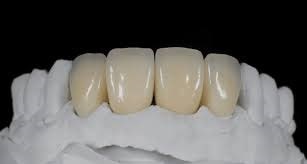Periodontal (Gum) disease is an infection of the tissues that support your teeth. Your gum tissue is not attached to the teeth as high as it may seem. There is a very shallow v-shaped crevice called a sulcus between the tooth and gums. Periodontal diseases attack just below the gum line in the sulcus, where they cause the attachment of the tooth and its supporting tissues to break down. As the tissues are damaged, the sulcus develops into a pocket: generally, the more severe the disease, the greater the depth of the pocket.
Periodontal diseases are classified according to the severity of the disease. The two major stages are gingivitis and periodontitis. Gingivitis is a milder and reversible form of periodontal disease that only affects the gums. Gingivitis may lead to more serious, destructive forms of periodontal disease called periodontitis.
First Sign of Gum Disease
- Gums that bleed easily
- Red, swollen, tender gums
- Gums that have pulled away from the teeth
- Persistent bad breath or bad taste
- Permanent teeth that are loose or separating
- Any change in the way your teeth fit together when you bite
- Any change in the fit of partial dentures
To prevent and treat gum disease, you need to make sure you remove all the plaque/debris from your teeth every day. This is done by brushing and flossing.
We will also regularly check for any signs of this problem and advise you accordingly.
We are highly trained in this field and will also be able to advise you on how best to maintain your oral health as well as carrying out regular though cleaning above and below the gum line. Occasionally we may decide to refer advanced cases to a periodontal specialist.
To maintain your healthy smile, we recommend regular appointments at any of our two locations to ensure that we can identify any arising concerns. Scaling, polishing and a thorough analysis of hard and soft tissue, all help determine the health of your gums and teeth.
Dental Crowns and Bridges
A bridge is made up of two crowns for the teeth on either side of the gap—these two anchoring teeth are called abutment teeth. The false teeth are called pontics and can be made from gold, alloys, porcelain or a combination of these materials. Dental bridges are supported by natural teeth or implants.
WHY IS IT NECESSARY TO REPLACE MISSING TEETH?
Missing teeth will affect your appearance, directly or indirectly and make you conscious of your looks
It may reduce your chewing efficiency and thus may affect on your digestive system in the long run
The alignment of your teeth may change. teeth work together and when a tooth is lost, the nearby teeth may tilt into the empty space. Or the teeth in the opposite jaw may shift up or down to fill that space. This can affect your bite and place unusual stress on your teeth.
Chewing only on one side only may cause extra stress on the jaw joints. A missing tooth may also cause shrinking of your jaw bone. This can change how the lips and cheek are supported.
Teeth that have drifted or tilted are also difficult to clean, this makes them more susceptible to tooth decay and gum disease. In the long run teeth maybe lost.
Drifted teeth are difficult to clean, thus resulting into further complications.
WHAT IS A BRIDGE AND HOW IS IT ATTACHED
It is an artificial tooth/ teeth suspended between natural teeth, taking support from them. The artificial tooth rests on the jaw area with the missing tooth, being replaced. A fixed bridge is commonly cemented to the natural teeth next to the space left to the missing tooth/ teeth.
WHAT MATERIALS ARE USED IN A BRIDGE
Bridges are made from metal ceramic or both. The dentist considers the appearance and function and can discuss the material best suited for you



